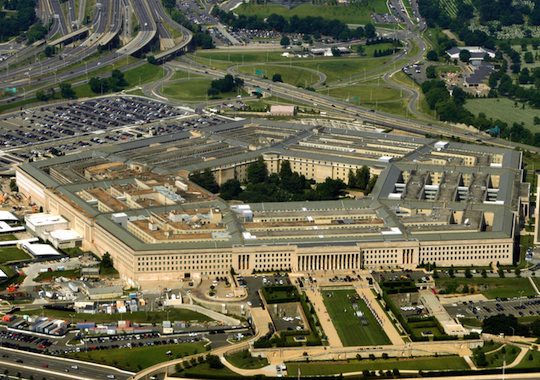Trump’s National Defense Strategy Has the Pentagon Popping Champagne

Here’s what we can say about the Trump administration’s just-released National Defense Strategy: it’s not a strategy and its subject is not defense.
Bearing the imprimatur of Pentagon chief James Mattis, the NDS—at least the unclassified summary that we citizens are permitted to see—is in essence a brief for increasing the size of the U.S. military budget. Implicit in the document is this proposition: more spending will make the armed forces of the United States “stronger” and the United States “safer.” Simply put, the NDS is all about funneling more bucks to the Pentagon.
Remarkably, the NDS advances this argument while resolutely avoiding any discussion of what Americans have gotten in return for the $11 trillion (give or take) expended pursuant to the past 16-plus years of continuous war—as if past performance should have no bearing on the future allocation of resources.
Try this thought experiment. The hapless Cleveland Browns went winless this year. How might Browns fans react if the team’s management were to propose hiking ticket prices next season? Think they might raise a ruckus?
The Pentagon has not recorded many more wins than the Browns of late. Yet a trust-us-we-know-what-we’re-doing attitude permeates the NDS. And amazingly, it’s almost certain that Mattis will get whatever additional money he wants.
The NDS contains several extraordinary statements. Yet none top this one: “Today, we are emerging from a period of strategic atrophy.”
What exactly is this supposed to mean? To atrophy is to waste away. Muscles atrophy from non-use, from too much sitting around and too little exercise.
Whatever else one can say about the United States military, it has not suffered from too much sitting around and too little exercise. If anything, the reverse is true. Under Presidents George W. Bush, Barack Obama, and now Donald Trump, U.S. forces have been constantly on the go. I’m prepared to argue that no nation in recorded history has ever deployed its troops to more places than has the United States since 2001. American bombs and missiles have rained down on a remarkable array of countries. We’ve killed an astonishing number of people.
To what effect? In Washington, the question goes not only unanswered but unasked.
Despite all this extraordinary activism, the NDS tells us we’re in big trouble. The global “security environment” has become “more complex and volatile than any we have experienced in recent memory.” What the NDS refers to as a “long-standing rules-based international order” is coming undone. In short, things are bad and they’re getting worse by the minute.
Given America’s dominant position in that global order, could it be that actions by the United States have contributed to this worrisome volatility? Could recent U.S. policies—for example, a penchant for waging preventive war—have undermined the rules whose passing the NDS laments?
Rather than reflecting on such possibilities, the NDS moves quickly to solutions, the most important of which is to enhance American military might. “A more lethal, resilient, and rapidly innovating Joint Force,” we learn, will “sustain American influence and ensure favorable balances of power that safeguard the free and open international order” from predators like Russia, China, Iran, and North Korea.
Hence the need to exploit new technologies to include “advanced computing, ‘big data’ analytics, artificial intelligence, autonomy, robotics, directed energy, hypersonics, and biotechnology.” Tapping the military potential of technology, according to the NDS, will “ensure we will be able to fight and win the wars of the future”—a theme of Pentagon propaganda extending at least as far back as Vietnam. Evidence to support that claim has been mixed at best. But open up your wallet, America!
When it comes to specifics, the NDS offers virtually none. Instead, under the heading of “Strategic Approach,” we get these less-than-reassuring nuggets:
- Be strategically predictable, but operationally unpredictable;
- Integrate with U.S. interagency;
- Counter coercion and subversion; and
- Foster a competitive mindset.
Somewhat more concrete is this statement: “The surest way to prevent war is to be prepared to win one.” That claim is not without merit. Yet preparedness to fight is not the only way to prevent war, is certainly not the cheapest, and may not be the most effective.
One alternative worth exploring is to use non-violent approaches to reducing threats to America’s security and well-being: instead of more expensive weapons, try more creative diplomacy. Yet that approach would entail actually formulating a strategy. This is what Nixon did in the 1970s with his opening to China, and Reagan did the following decade when he found common ground with Gorbachev. Both initiatives were not without risk, but the risks paid off.
To judge by the text of this document, the leaders of our present-day cramped and unaccountable national security apparatus possess neither the imagination nor the gumption to undertake anything comparable.
Who will celebrate the National Defense Strategy? Only weapons manufacturers, defense contractors, lobbyists, and other fat cat beneficiaries of the military-industrial complex.
Andrew Bacevich is The American Conservative’s writer-at-large.
Comments